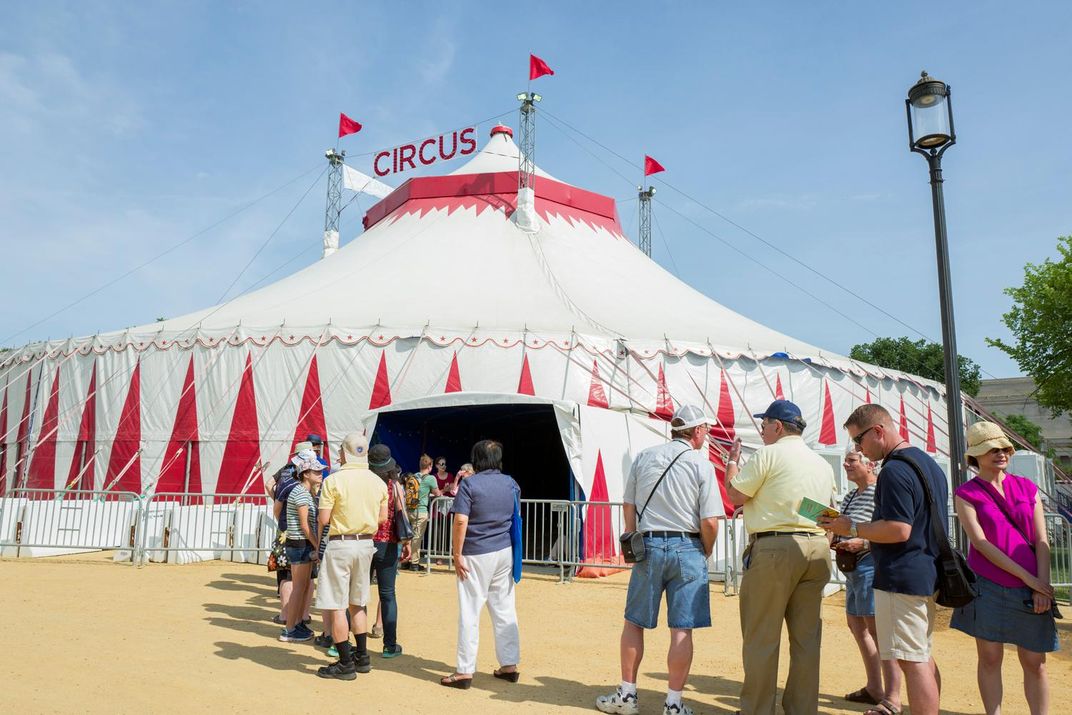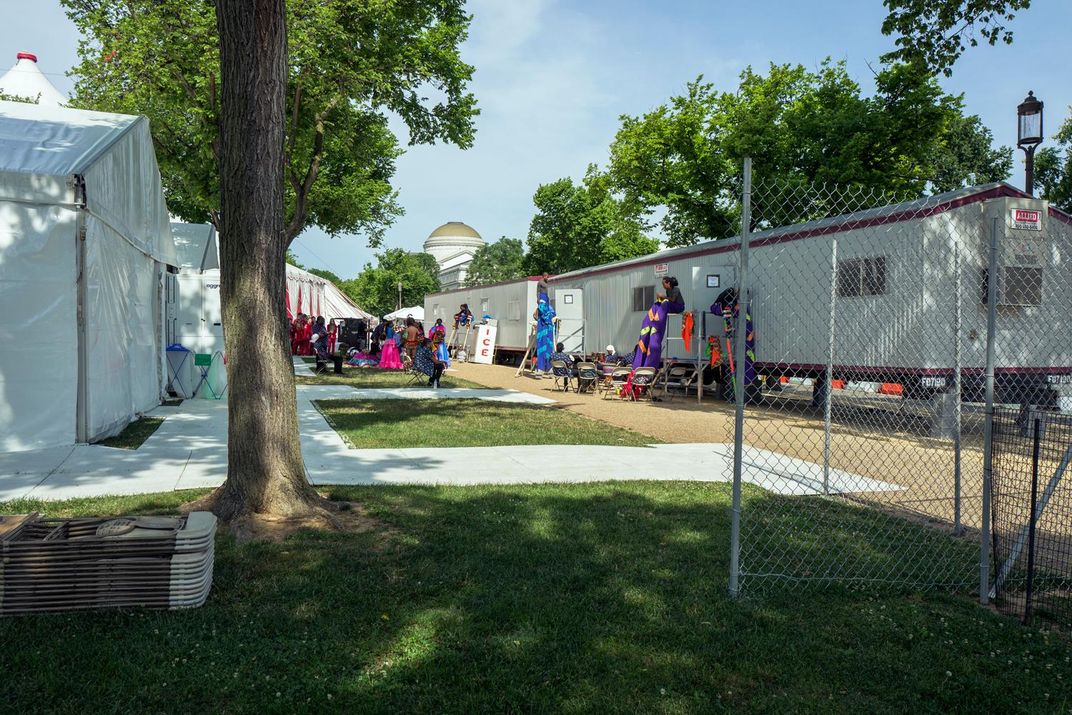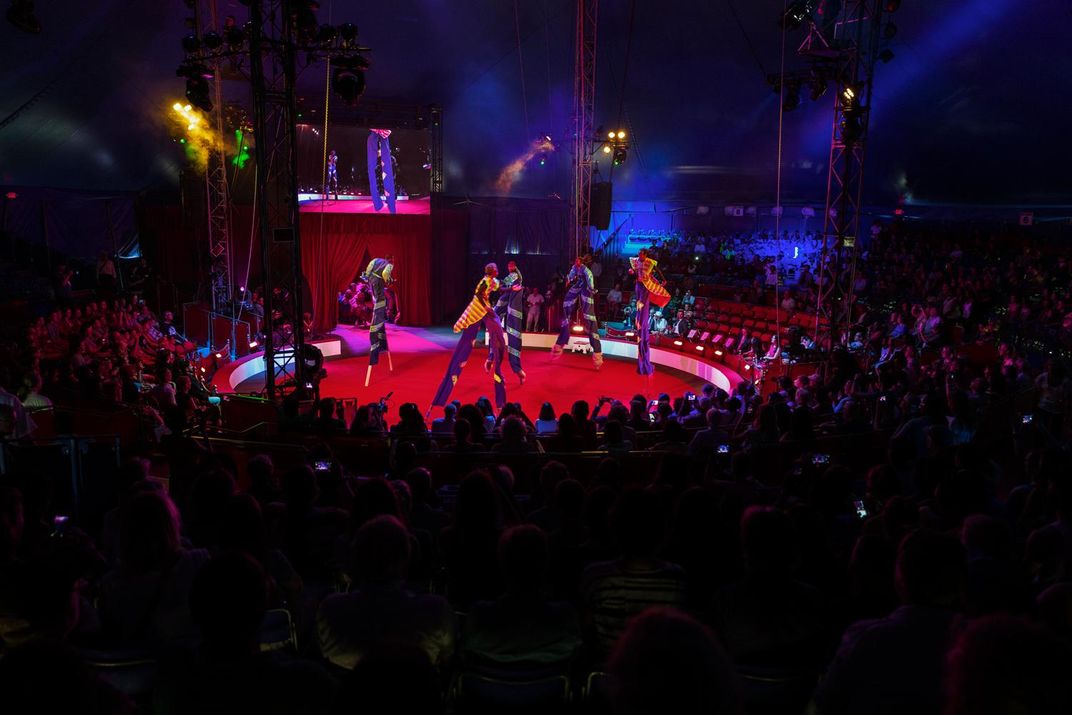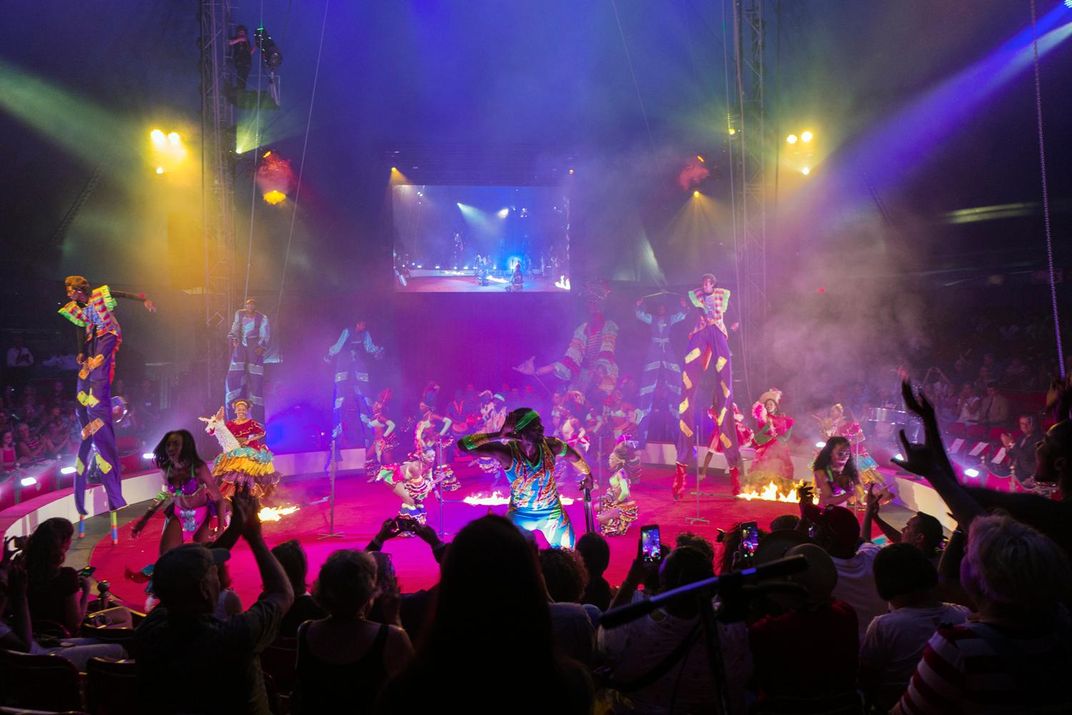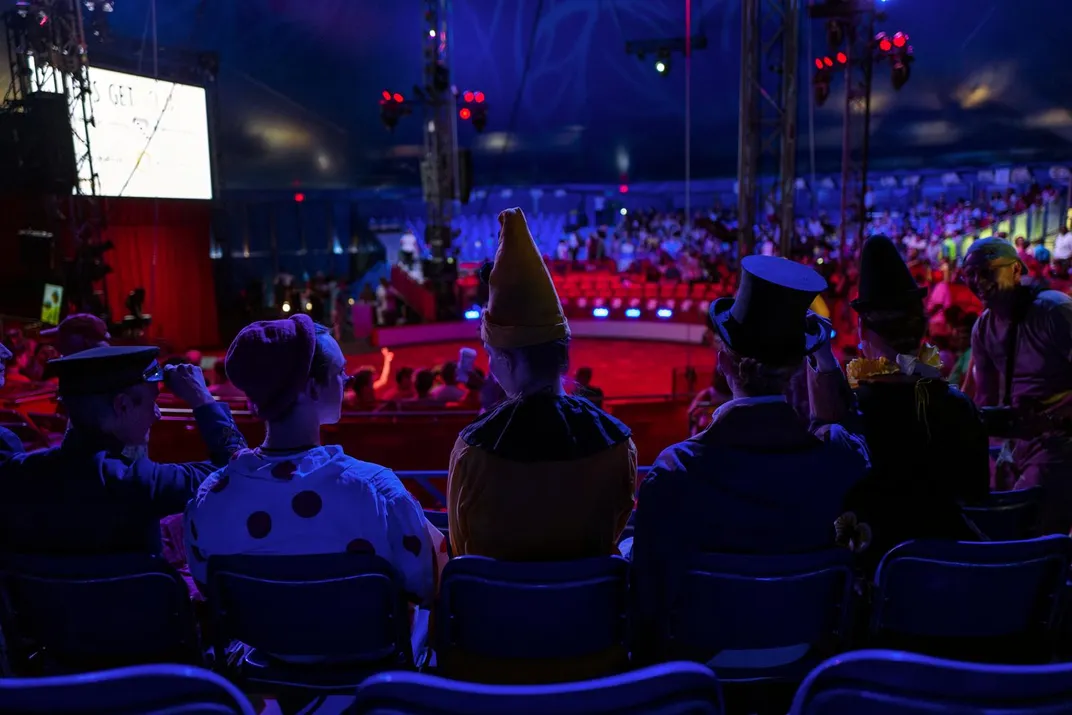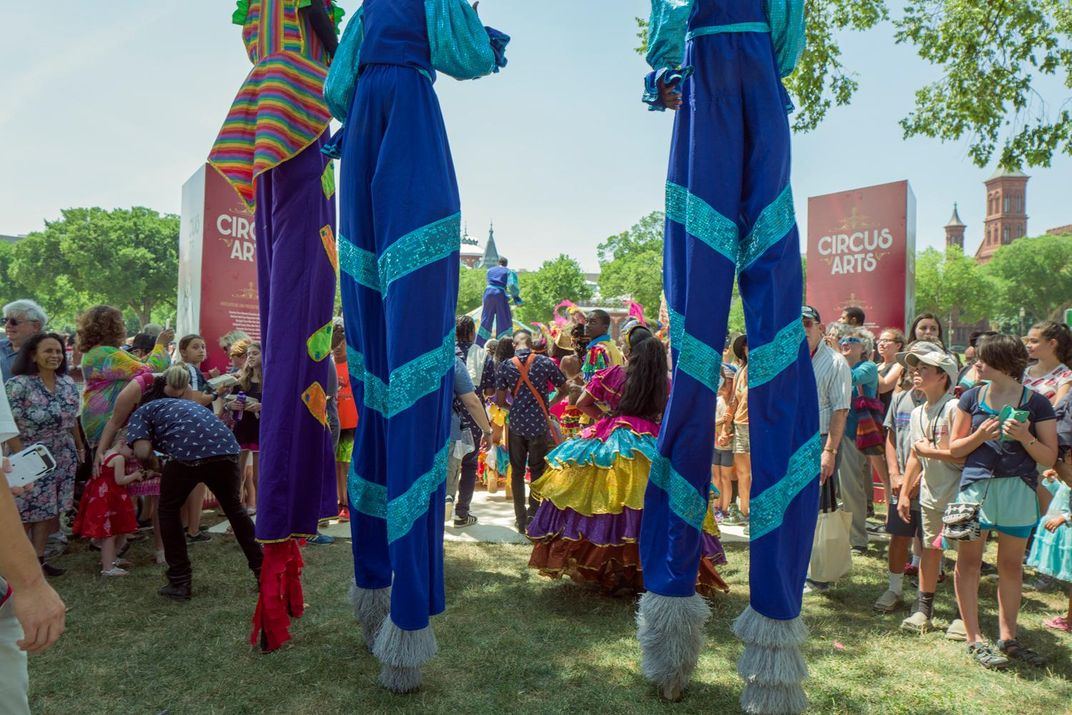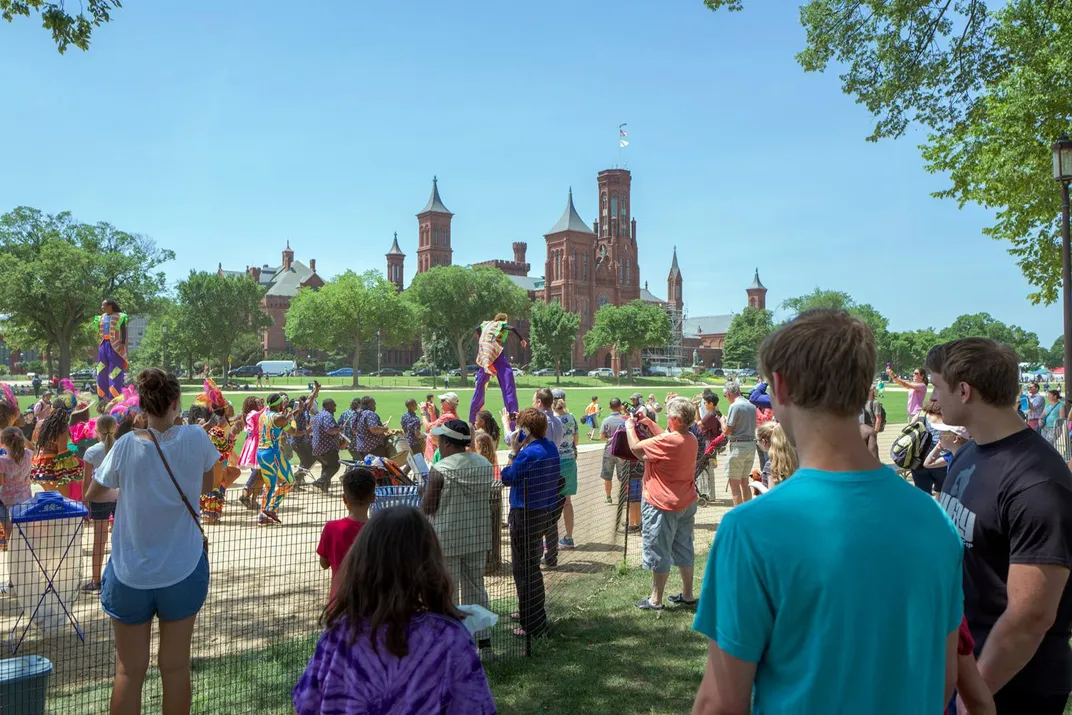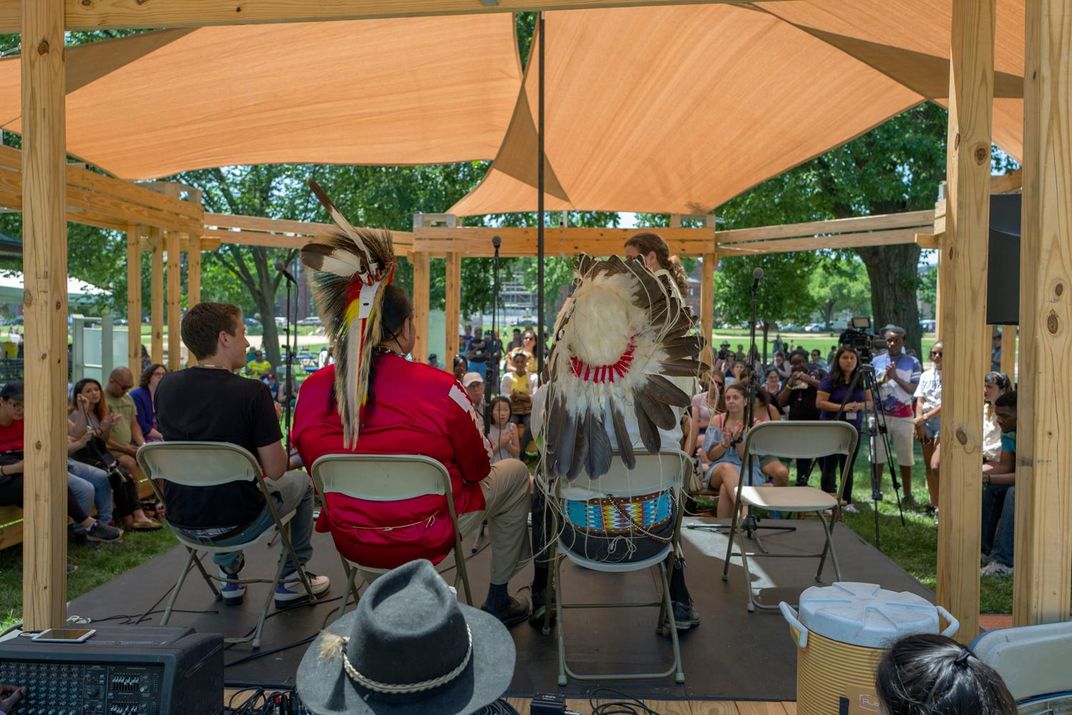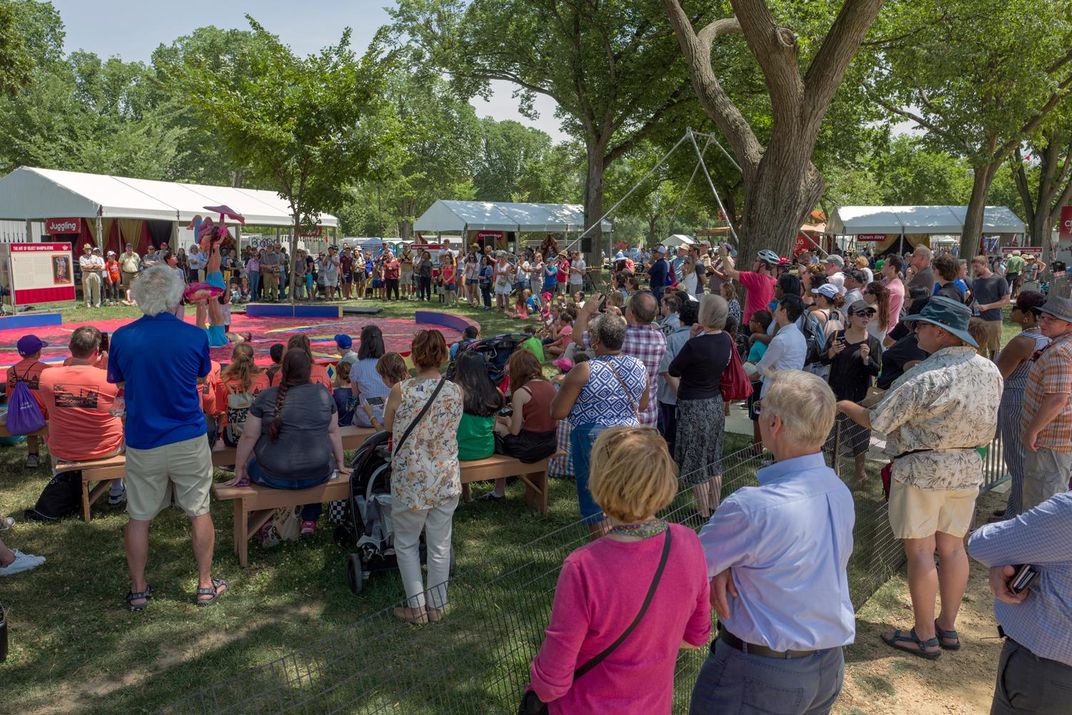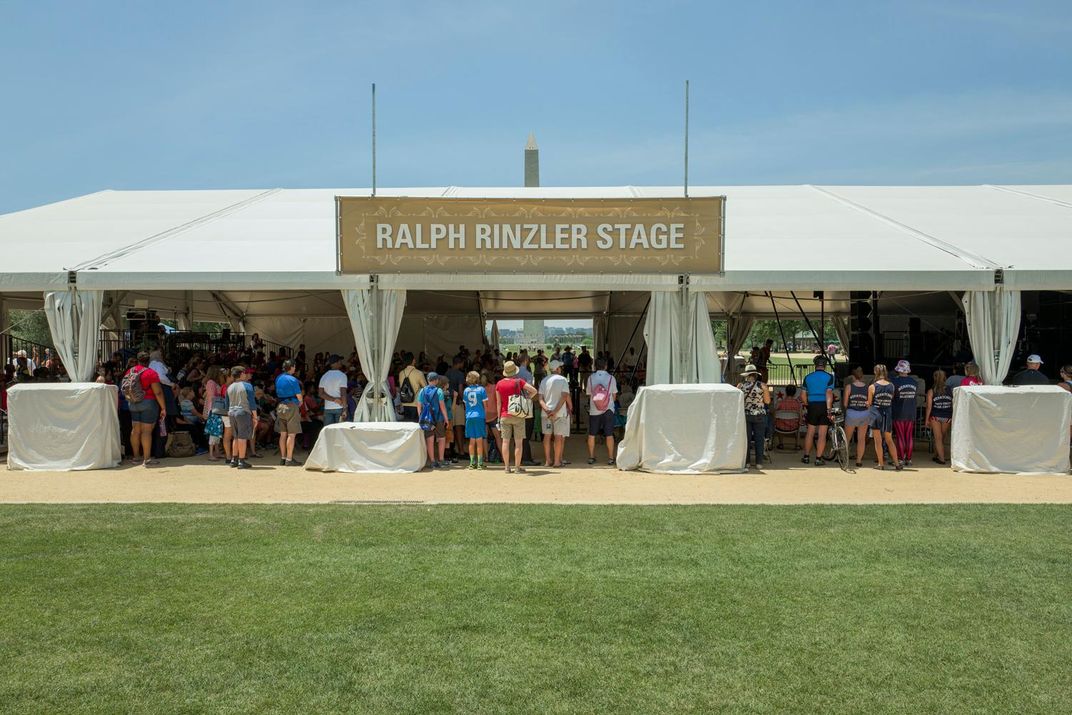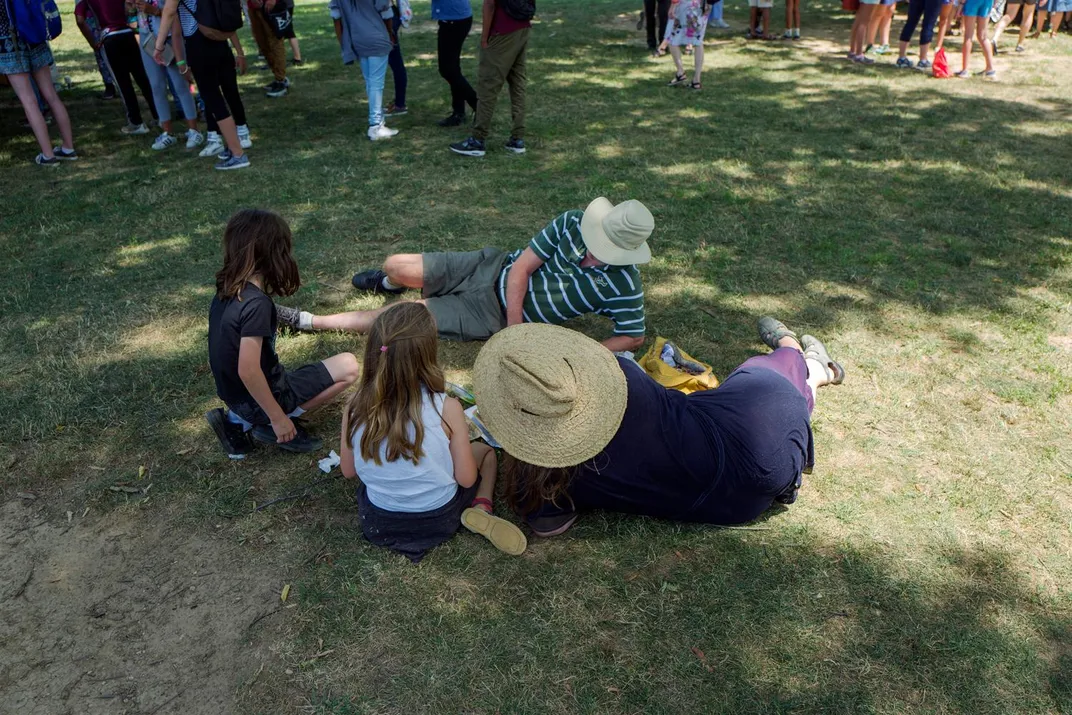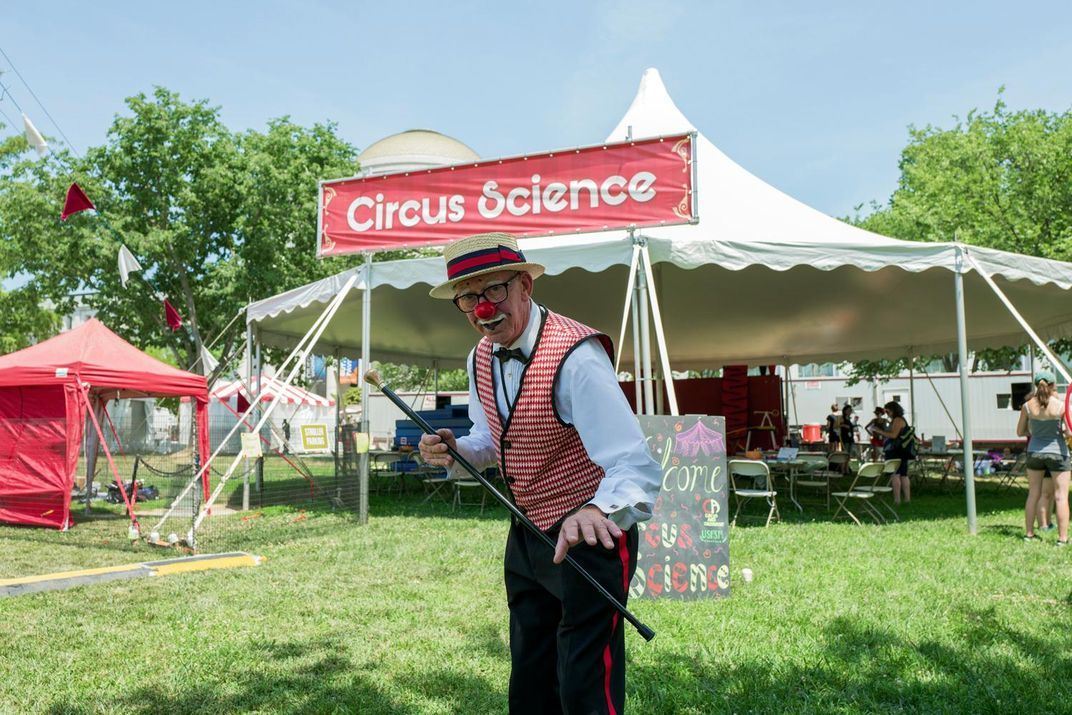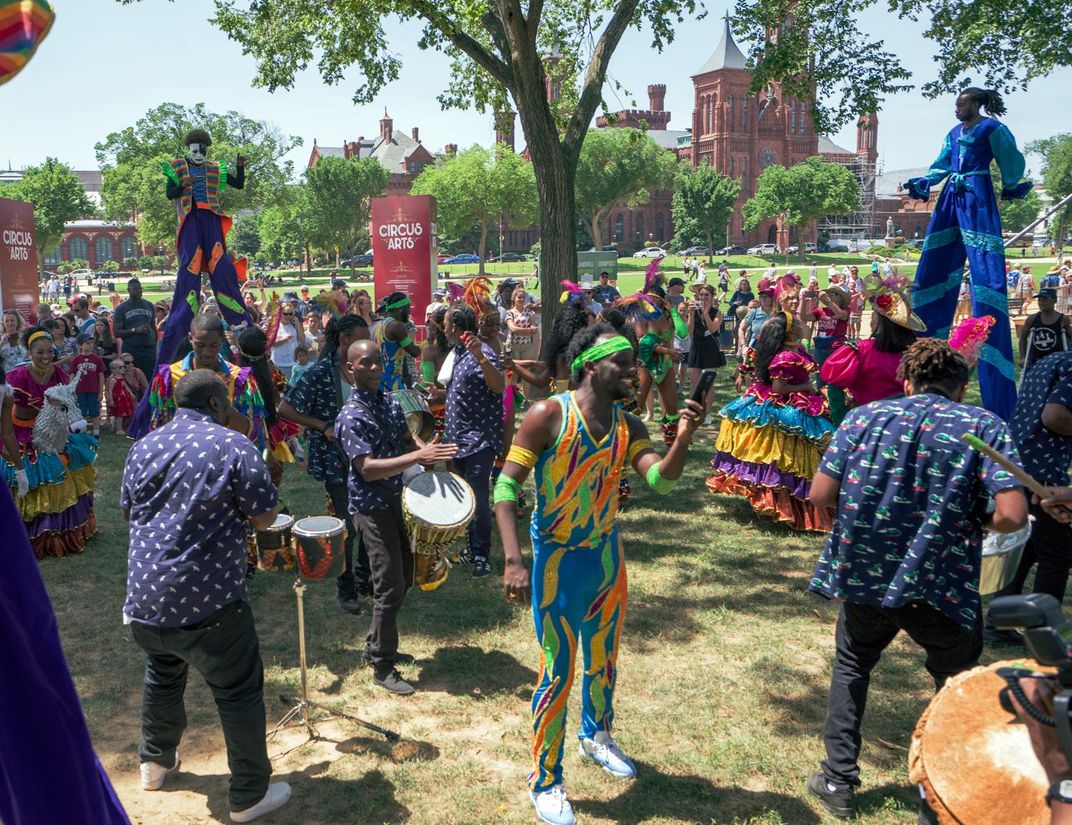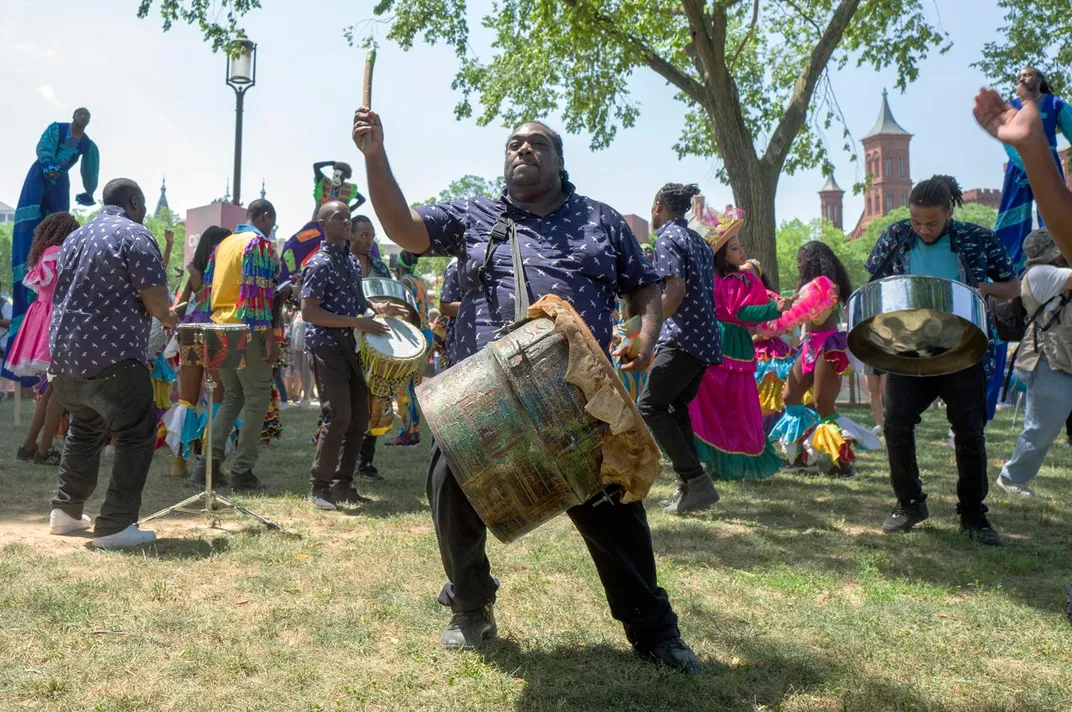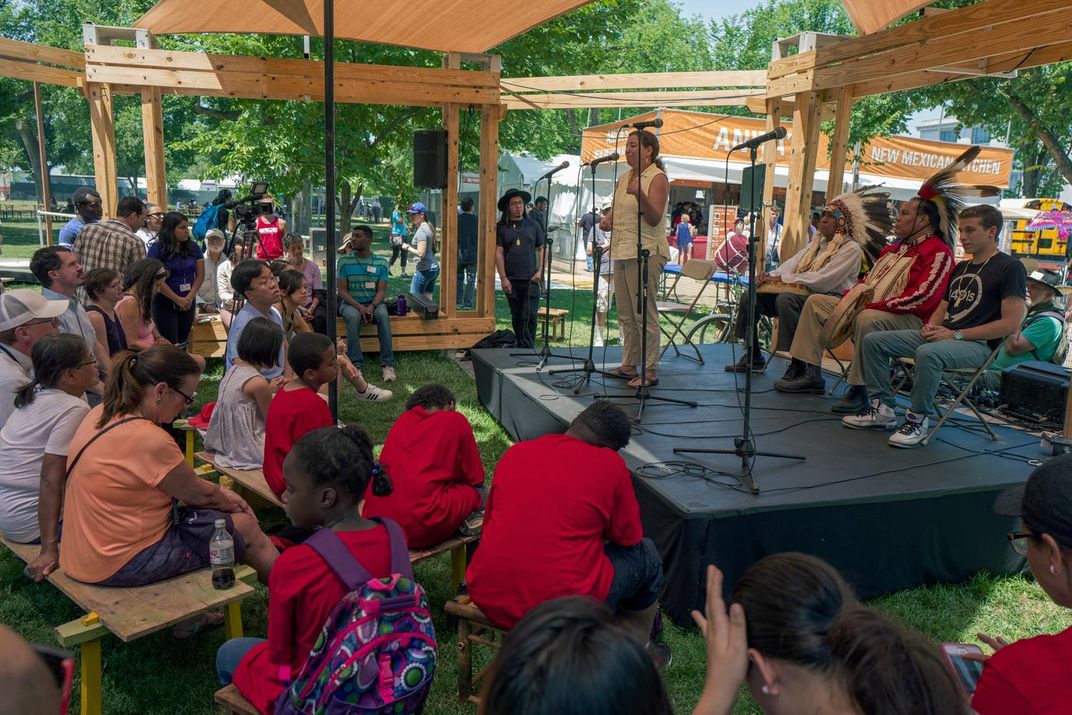Step Right Up to the Big Top Circus Tent at the 50th Annual Folklife Festival
The day the circus rolled into Washington, D.C., and other tales from the Smithsonian’s hot summer party on the National Mall
Rather than simply blow out the candles to celebrate its 50th anniversary, the Smithsonian’s 2017 Folklife Festival proved it’s still limber enough to dance with fire. Underneath a Big Top tent on the National Mall, a pyrotechnic display by UniverSoul Circus launched the two-week festival. The magic of the circus and the retelling of stories of how people from near and far have created America is the focus of its two programs “Circus Arts” and “On the Move: Migration Across Generations.”
From now until July 4, and then reopening July 6 to 9, on the National Mall between 7th and 12th Streets, S.W. in Washington, D.C., the Folklife Festival's schedule features everything from capoeira dancing, to stories of migration, to lessons in trapeze.
“We build a city every year on the National Mall,” says Michael Atwood Mason, the director of the Center for Folklife and Cultural Heritage. “We’re telling stories of the American experience.” Since 1967 the festival has featured programming aimed to showcase America’s living cultural traditions. “When so much threatens to pull us apart, the festival helps us find what we share,” Mason says.
The theme of the circus evokes a sense of nostalgia for some. “I was last at the circus 30 years ago,” says Bill Mansfield, a folklorist from Washington, D.C., and attending the opening ceremonies. “In this digital age when you can stream everything, it’s great to have the real, live human element.”
For the young, the circus still occupies a place of wonder. “They keep asking about acrobats, and they’re only 4,” says Laura, a childcare specialist, who works at the Smithsonian Early Enrichment Center, referring to the gaggle of excited kids seated around her under the Big Top.
In a time when the face of the American circus is changing, the festival has also made room for young performers to test their chops in the ring. “It makes it feel so much more important to step out of the tent and see the Capitol Building,” says Maya Zuckerman, a young acrobat visiting with her troupe from Circus Harmony in Florissant, Missouri. They’ll perform along with other youth troupes each night before the Big Top events.
Outside the Big Top, the beats of music from around the country reverberate across the festival grounds. “Different styles of music from around the world help us see how much we have in common with one another,” says Christylez Bacon, a progressive hip-hop artist from Washington, D.C. performing at the festival. To demonstrate he pulled a pair of spoons from his pants pocket, an instrument with an international history as varied as America’s, and began to play. Accompanied by his own beatboxing, it was a style all his own.
Then husband and wife duo Roy and P.J. Hirabayashi, of San Jose, California, rolled their Taiko, a barrel shaped Japanese drum, into the Story Circle, an area of the grounds that will feature programming about native populations and people from afar that have made America home.
They’re joined by the Grammy-award-winning conjunto band Los Texmaniacs, who have a similar mission with their music. From San Antonio, Texas, the group’s music tells the story of life straddling the border between two countries. Most recently, they played at the opening celebration of the National Museum of American History’s newly renovated west wing gallery “The Nation We Build Together.”
There are also a suite of hands-on activities, from storytelling workshops with the youth empowerment organization Gandhi Brigade, puppet making lessons, and—for the daring—trapeze.
You’ll find Robin Eurich in the Circus Science tent—he’s the elder clown with the Panama hat and cane—teaching the physics behind all those circus stunts. “You don’t need to be brilliant to teach Newton’s laws,” says Eurich. You just have to let them try, and fail, and try again at juggling. And that’s what he’ll be doing for the next two weeks. “I’ll be here until I pass out,” he says good-naturedly, doffing his hat to the city’s well-known heat and humidity.
Beating that heat is of no concern to the fire performers, who joyfully danced the limbo beneath blazing poles while aerialists swoosh overhead. But luckily for festivalgoers, the only thing making them sweat will be the death-defying acts, because the Big Top is air-conditioned.
